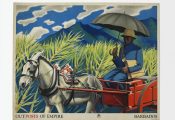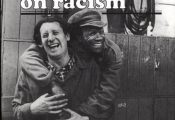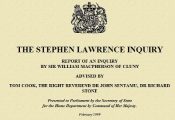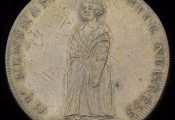In the second half of the 19th century, representatives of European governments arrived at a conference in Berlin convened by the German chancellor Otto von Bismarck with the aim of creating or expanding European spheres of influence in Africa. This conference laid the groundwork for the now familiar geopolitical map of Africa.
The French came to dominate most of West Africa, and the British held East and southern Africa. The Germans held Tanganyika (Tanzania, Rwanda and Burundi), Cameroon, Namibia and Togo, while the Portuguese had Guinea Bissau, Angola and Mozambique. And the Belgians acquired the vast territory that is today the Democratic Republic of Congo.
Atrocities in the Congo
In the Belgian Congo, Leopold II, who had financed the expeditions that staked Belgium’s claim in Berlin, embarked on a campaign of ruthless exploitation of its natural resources, particularly rubber. Latex (rubber sap) was in great demand for tyres and other products, and Congo was covered with rubber trees. Joint ventures were created between Belgian, British and Dutch firms, resulting in astronomical profits for all involved.
The Congolese had to search for rubber trees through inhospitable jungle. In Leopold’s Congo, it was illegal to pay Africans with money, so other more brutal forms of persuasion were employed. The British vice consul in 1899 gave a terrifying example of how the Belgian forces carried out this task:
An example of what is done was told me up the Ubangi [River]. This officer[‘s] … method … was to arrive in canoes at a village, the inhabitants of which invariably bolted on their arrival; the soldiers were then landed, and commenced looting, taking all the chickens, grain, etc., out of the houses; after this they attacked the natives until able to seize their women; these women were kept as hostages until the chief of the district brought in the required number of kilograms of rubber. The rubber having been brought, the women were sold back to their owners for a couple of goats apiece, and so he continued from village to village until the requisite amount of rubber had been collected.
For failing to meet production quotas, entire communities were massacred. High-ranking officials would later admit that the severing of hands was a deliberate policy. Charles Lemaire, commissioner of the Equator District of the Congo Free State, recalled that ‘as soon as it was a question of rubber, I wrote to the government, “To gather rubber in the district, one must cut off hands, noses and ears.”‘
During expeditions, Force Publique soldiers (enslaved Africans who had been press-ganged or had been stolen as children and brought up in child colonies founded by the king and the Catholic Church) were instructed to bring back a hand or head for each bullet fired, to make sure that none of the latter had been wasted or hidden for use in rebellions. A soldier with the chilling title ‘keeper of hands’ accompanied each expedition.
Campaign against the reign of terror
In 1904, the Congo Reform Association was set up in Britain by the radical human rights campaigner E D Morel and Roger Casement – later to become a famous Irish Republican – who was for a time British consul in Congo. From the early 1900s, until after Leopold’s death in 1909, they used information smuggled out of the country by missionaries and Leopold’s employees to mount a campaign that won the support of prominent politicians and churchmen, in both Britain and the United States.
Towards the end of his rule, Leopold, desperate to prevent the details of the atrocities being carried out in Congo getting back to the rest of the world, destroyed the evidence of what was happening there. For eight days in 1908, furnaces in his Brussels headquarters were at full blast as Congo state archives were burned. He sent word to his agent in Congo to do likewise.
Leopold’s reign of terror was the region’s most severe demographic disaster after the enormously negative impact of transatlantic enslavement. By the time it ended, after a growing outcry around the world, as many as 10 million Congolese had been murdered. The Democratic Republic of Congo has never really recovered from these horrors.






